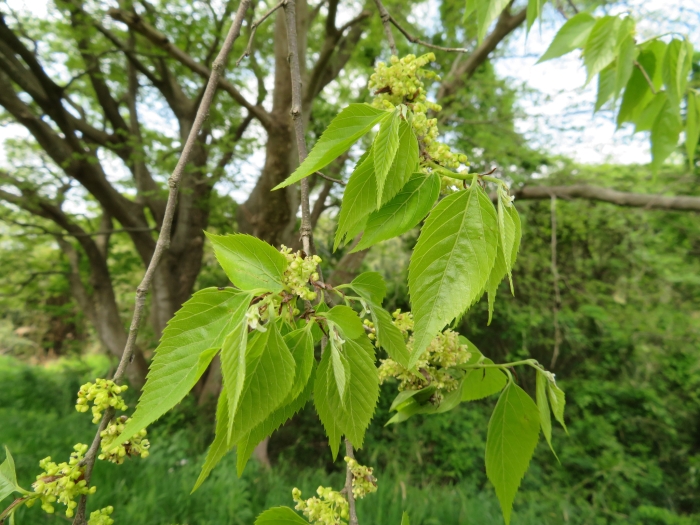Scabrous Aphananthe
(Aphananthe aspera)
Scabrous Aphananthe (Aphananthe aspera)
/
/

belvedere04
CC BY 4.0
Image By:
belvedere04
Recorded By:
Copyright:
CC BY 4.0
Copyright Notice:
Photo by: belvedere04 | License Type: CC BY 4.0 | License URL: http://creativecommons.org/licenses/by/4.0/ | Rights Holder: belvedere04 | Publisher: iNaturalist | Date Created: 2020-04-30T10:35:21-07:00 |

























Estimated Native Range
Summary
Aphananthe aspera, commonly known as Scabrous Aphananthe or Muku tree, is a deciduous tree native to a variety of habitats including mixed forests, forest margins, and along streams in East Asia, encompassing China, Taiwan, Japan, Korea, and Vietnam. It typically grows on slopes and stream banks at elevations between 328 and 5,249 feet (100-1600 meters). This tree can reach a height of 65 feet (20 meters) with a broad crown that provides light shade. The bark is gray and rough, and the leaves are oblong with a rough texture, which when dried, can be used as a natural sandpaper for wood polishing. In spring, small, inconspicuous greenish flowers appear, followed by black drupes that are attractive to birds.
The Muku tree is valued for its hardy nature and is often used in classical Chinese gardens for its aesthetic appeal and historical significance. It is also planted for erosion control and as a street tree in urban areas. The tree prefers well-drained soils, tolerates a range of soil types, and can grow in full sun to part shade. While it is relatively low-maintenance, it can suffer from leaf spot diseases and may require occasional pruning to maintain its shape. The wood is used for furniture and construction, and the fibers from the inner bark are used for making ropes and paper.CC BY-SA 4.0
The Muku tree is valued for its hardy nature and is often used in classical Chinese gardens for its aesthetic appeal and historical significance. It is also planted for erosion control and as a street tree in urban areas. The tree prefers well-drained soils, tolerates a range of soil types, and can grow in full sun to part shade. While it is relatively low-maintenance, it can suffer from leaf spot diseases and may require occasional pruning to maintain its shape. The wood is used for furniture and construction, and the fibers from the inner bark are used for making ropes and paper.CC BY-SA 4.0
Plant Description
- Plant Type: Tree
- Height: 30-60 feet
- Width: 20-30 feet
- Growth Rate: Moderate
- Flower Color: Green, Yellow
- Flowering Season: Spring
- Leaf Retention: Deciduous
Growth Requirements
- Sun: Full Sun, Part Shade
- Water: Medium
- Drainage: Fast, Medium, Slow
Common Uses
Bird Garden, Low Maintenance
Natural Habitat
Mixed forests, forest margins, and along streams in East Asia
Other Names
Common Names: Rough-leaved Hickory, Asian Elm, Cao Ye Shu, Rough Elm
Scientific Names: , Aphananthe aspera, Aphananthe aspera, Aphananthe aspera var. aspera, Aphananthe aspera var. pubescens, Celtis mukii, Celtis muku, Celtis sinensis, Cerasus aspera, Homoioceltis aspera
GBIF Accepted Name: